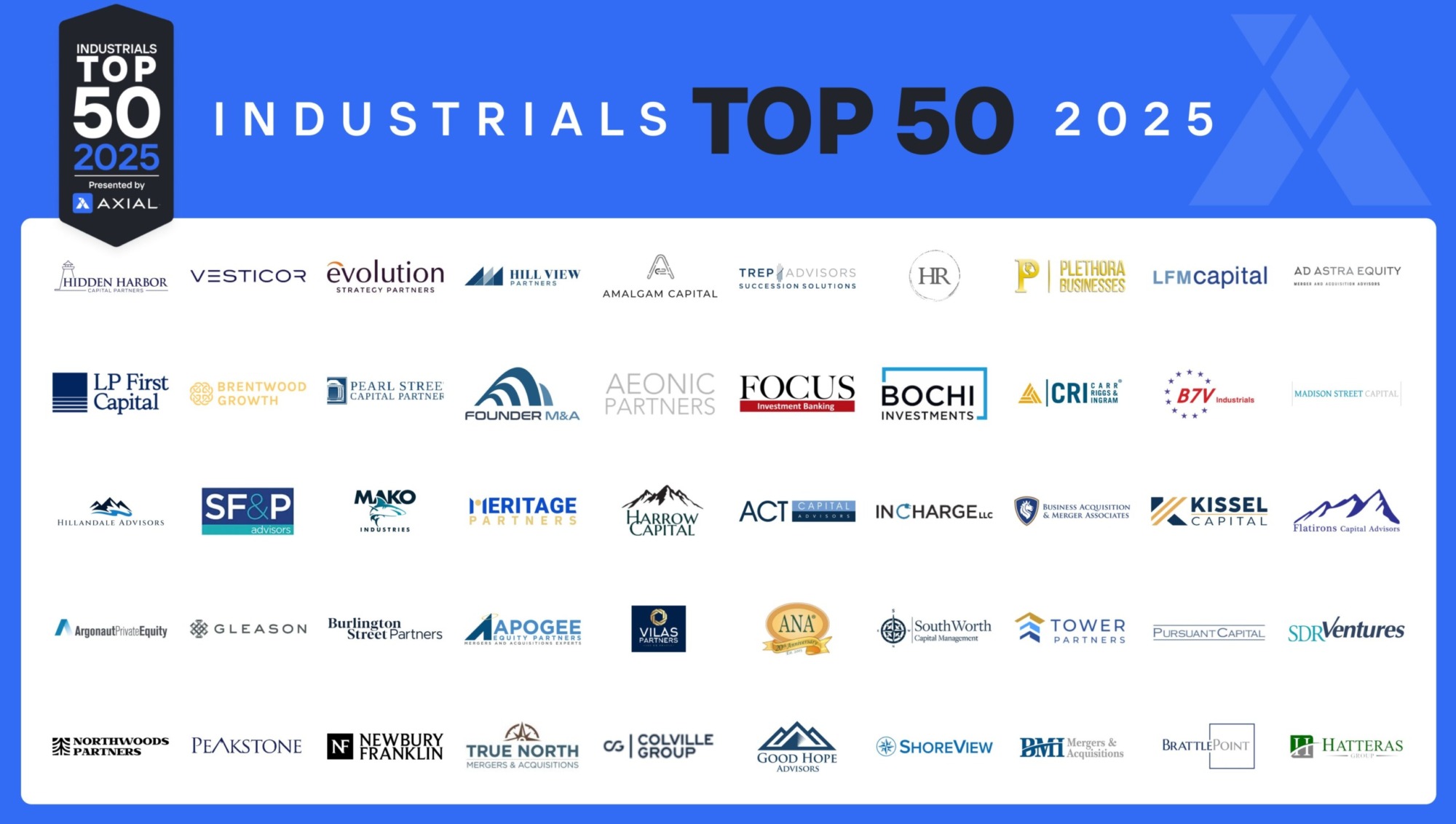
The Top 50 Lower Middle Market Industrials Investors & M&A Advisors [2025]
Industrials remains the most dominant sector in Axial deal flow, representing more than 25% of all deals brought to market…
Proprietary sourcing has been a staple of deal origination in the Middle Market Private Equity community for decades. For most established firms that have raised multiple funds and been around for years, proprietary sourcing is a proven method that has yielded results. In today’s market climate, however, this strategy can be a waste of time, efficiency and money.
The current market sees a continuing record level of dry powder, high valuations, and greater access to private company information. The infusion of new market participants including spin-outs, family offices and corporate buyers also influences the supply-demand dynamic. These factors together have made firms question whether they can still be competitive by relying on proprietary deal flow and passive middle market intermediary coverage.
These dynamics are forcing firms to rethink how they approach business development. Many firms are looking for ways to differentiate their deal flow from competitors, i.e. the “new proprietary” deal flow. That’s where we see a rise of firms, especially among middle market sponsor groups, having professionals solely focused on business development.
BD professionals maintain established relationships and build out new ones. More importantly, these professionals should go out and build new relationships with smaller intermediary organizations (the “long tail” of advisors) that the firm has not interfaced with.
Given the level-setting and access to private company information nowadays, there has inherently been more and more firms calling on the same business owners. The days of believing you are one of a few firms calling on business owners of certain size are long over. The days of finding “unbanked” business owners who will run a less competitive process are also increasingly rare.
So why not take a different route and allocate time and resources to covering smaller, more under-the-radar advisory firms that your competitors do not? Many smaller advisory firms with 2 to 15 professionals are not the most proactive when it comes to finding new buyers, especially Private Equity firms.
Nadim Malik, CEO of Sutton Place Strategies, recently published his yearly report on Private Equity firms’ intermediary coverage. Generalist firms focused on deals north of $250M EV had a median coverage of 30.1%, while generalist firms focused on deals between $10M to $ 50M EV had a median coverage of 7.8% of deals. With a lack of coverage over deals that meet respective firms’ mandates, it begs the question as to why firms haven’t truly embraced internalizing business development and a change in strategy.
“In the same way that private equity firms consider tracking certain key performance indicators of their portfolio companies to be vital, when it comes to deal sourcing, there are certain metrics you just have to know” Nadim said.
A few of these metrics include:
With all that said, proprietary deal sourcing is not yet dead. There are three main reasons why it still makes sense for a firm to have a proprietary focus under certain conditions.
The first is institutionalized business development. Firms such as TA Associates, Summit and H.I.G. all have large business development organizations and have dedicated the necessary financial and human capital resources to have direct calling efforts on companies.
The second is if a firm’s investment thesis includes add-ons. Once a platform is acquired, a concerted effort on a specific subset of companies may make sense if the market is consolidated enough. The portfolio company leadership team will bring additional insight to the table and often have industry relationships much deeper than a Sponsor group that focuses on multiple industry segments.
The third is if a firm has a particular thesis and specialization in an industry vertical. Proprietary sourcing tactics of attending trade shows and having direct email and calling efforts then becomes more manageable.
The emphasis on thorough evaluation and the level of sophistication pertaining to diligence on investment opportunities may be second to none out of any investment industry. Firms spend millions a year quantifying potential returns on capital deployment, trying to understand how they can generate not only the largest returns for their LP’s, but for themselves as well. Why is it then that the Private Equity community at large has neglected to correlate deal origination and business development to return on investment with the same level of vigor? Maybe it’s time to reconsider your firm’s strategy.
